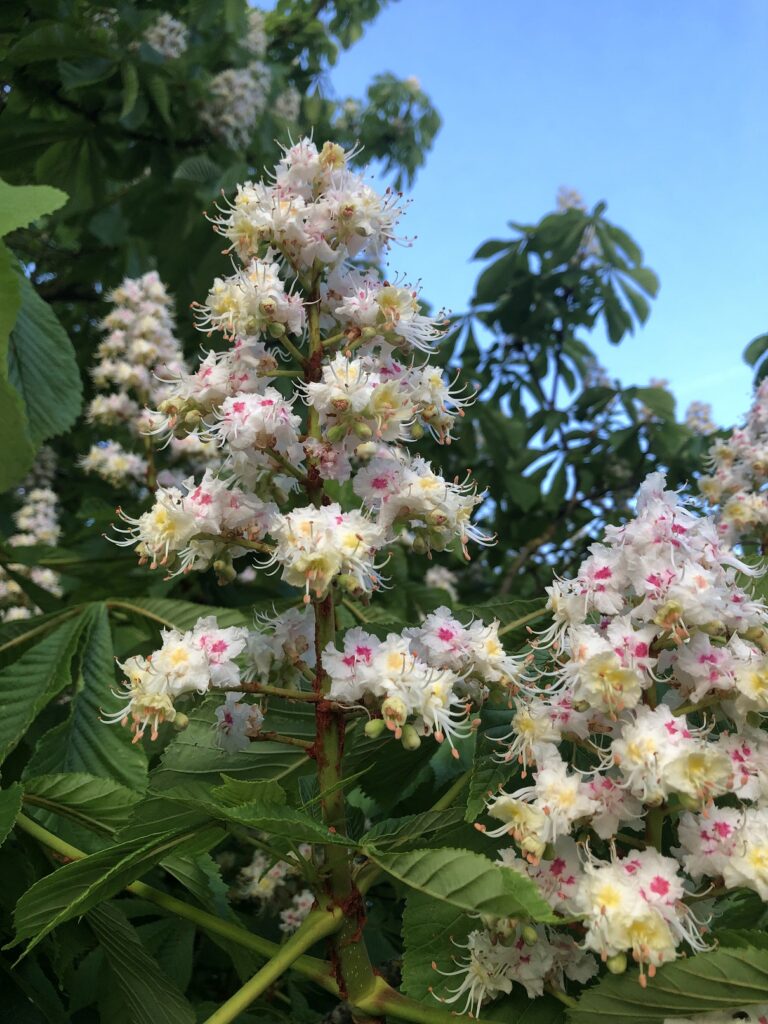
Throughout my life nature has been my inspiration and guide, and has constantly delighted and filled me with child-like wonder and curiosity about the natural world. Ever-changing, the turning wheel of nature’s calendar always helps to draw my attention to special experiences. The first tale-tell signs of spring – frog spawn, leaf burst and the welcoming call of the cuckoo – my mind and senses sharpen, and memories reawaken.
I have reflected a lot this past winter on my relationship with nature, seeking new challenges and learning. It’s time for a change. My pondering has taken me into the direction of floristry, or ‘art through the medium of flowers’. For me it’s a perfect continuation – combining my love of nature and natural elements through a process of observation and practical skills; creating a balance between sense and mind through flowers – well, that’s what I hope to nurture.
As with all my work, my intention is to learn ideas and techniques that are natural and sustainable. From using local, in-season cut flowers and adopting free-from plastic, recyclable and compostable alternatives to many of the methods and materials used in floral designs. I’m sure there will be many technical and creative challenges along the way, but my path is to follow a seasonal, nature-led practice that will inspire and influence the choices I make and hopefully help encourage others to develop a deeper connection to the environment.
So looking at the natural world around me with a new ‘flowery’ focus, I decided this month to take more time to stop and notice tree flowers. Firstly, what interests me is why? Why are those tree flowers that shape, size and colour?

Norway maple – yellow clusters of flowers appear early spring before the leaves and provide an important early source of food for insects, especially bees.
All trees produce flowers, though some are small and usually go unnoticed. The Common hazel has separate male and female flowers – I’m sure you’re familiar with the distinctive yellow ‘lambstail’ catkins, clusters of flowers, that hang down from its branches in February. These are the male flowers and when touched release a cloud of pollen, but have you ever noticed the female flower? – a tiny bud with red star-like tufts which also grow on the same twig as the catkins. Similarly, this month look out for the long dangly Oak tree catkins, but the small red female flowers are difficult to spot so high up. Or slightly easier, look for Sycamore tree flowers that also hang down in long clusters called panicles amongst its leaves. The greeny-yellow flowers are a mixture of both male and female flowers.

In complete contrast, the candle-like spikes of the Horse chestnut tree are spectacular. Blooming between April and June, the spikes are made up of both male and females flowers. Pinkish-white flowers turn yellow when pollinated by insects. It’s fascinating to learn about the many ingenious ways trees reproduce by producing flowers, and its fun detective work to observe flowers up close to discover if they are designed to be cross-pollinated by insects, animals or the wind and then notice how the fertilised flowers develop into seed-bearing fruits or cones.
So when I look at tree flowers, not only do I appreciate their many colours and forms, but also their purpose – which adds another level of complexity and understanding why they are the way they are.
Appreciating a flower is an amazing example of the inspiration we can of gain from being in the moment, observing and reflecting. I’ll share some further thoughts and reflections in future blogs, as I embark on this Wild Floristry journey ….
